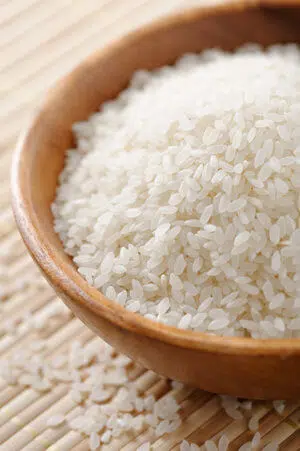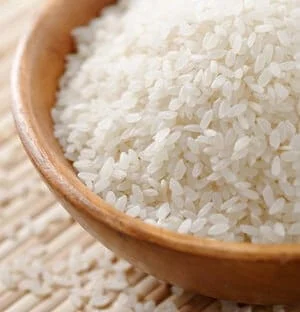How to make sushi rice – the complete recipe
Preparing sushi rice may seem complicated, but once you get started, you’ll find out that it is a bit like cooking ordinary rice, but with vinegar added to it, and a dash of Japanese technique. There are four key steps to making sushi rice: washing, soaking, cooking, and seasoning. Let’s review everything you need to know:
Choosing the right rice
Japanese short-grain rice has a higher starch content than long-grain rice and takes a different amount of water than long-grain rice. Short-grain rice is stickier and better for holding its shape when rolled into sushi. Long-grain (‘regular’) rice just isn’t sticky enough for sushi-making. Here is what a bag of sushi rice should look like.
Measuring sushi rice

Prepare 1 cup of sushi rice per 3 sushi rolls. Each roll makes up 6-8 little sushi pieces. 2 rolls are recommended per person, depending on personal preferences. Wash the rice (1 cup = 3 rolls) with running water for 1-2 minutes until there is no more starch coming out of it. For best results, let the rice soak in water for 30 minutes to help soften it.
After washing the rice, place it gently in a pot and add more water than rice. It should be about 1.2:1 in favor of the water. That is 20% more water compared to the rice. Do not add more water or you will end up with dough instead of rice.
Still not sure? Check out our Quantity Calculator.Cooking the rice
Cook the rice on high heat at first, stirring every minute or two until the water boils. Then, lower the heat to low and cover the pot. After 6-8 minutes, check the water level – if there is no more water, only bigger grains of rice in the pot, the rice is ready. If not, check back every minute, making sure not to burn the rice at the bottom.
Quantity calculator
We are here to help with all the calculations. Select how much you will be making, and the calculator will provide you with the quantities. Have a go!
Units:
Taking out the rice
When taking the rice out of the pot, only use a wooden spoon to handle the cooked rice. A metal spoon will cause the rice to be damaged, and it can also react with the vinegar that we will be adding later.
Second, do not scrape the rice out from the bottom of the pot. If it comes out easily, that is great. Otherwise, do not use it. The rice will taste bad. Put it in wooden or plastic bowls to chill.
Seasoning the rice

Rice vinegar mixed with sugar and salt is essential for giving sushi its distinct combination of flavors. If you neglect this part, your sushi won’t quite taste like sushi should. It is not recommended to substitute rice vinegar as most types of vinegar are much too strong. Rice vinegar is more delicate and blends in perfectly with the rice.
How to season the rice
- For 3 cups of dry sushi rice, use 0.5 cup of rice vinegar, 2 tablespoons of sugar, and 2 teaspoons of salt. Use only rice vinegar! Any other kind of vinegar will taste bad. Alternatively, you could use sushi rice seasoning powder.
- Mix together in a small pot on medium heat until all the solids are mixed together.
- Pour the mixture onto the rice and mix well. That should take a minute or two.
- Let the rice cool down for a few minutes until it reaches room temperature. Don’t put the rice in the fridge to make it cool faster – that will damage the rice. You can, however, use a fan, A/C, or put it by the window.
Important tip – Some people prefer less seasoned sushi rice. Also, the strength of rice vinegar can vary depending on the brand. If it is your first time making sushi rice, or you are uncertain, prepare half the amount of seasoning described above. Mix it with the rice and taste.
Trust your own palette if you want to use the full amount or not.
Final thoughts
That’s it, you’ve made it! For the sake of the internet, please take a moment to share your experience in the comments section below. Did it turn out as you expected? Better? Ask any questions you have, somebody will be able to answer, and it might even help other folks with the same question in the future. And most importantly, enjoy making sushi!





Thank you for your recipe! It tastes amazing and I will be using this recipe again!